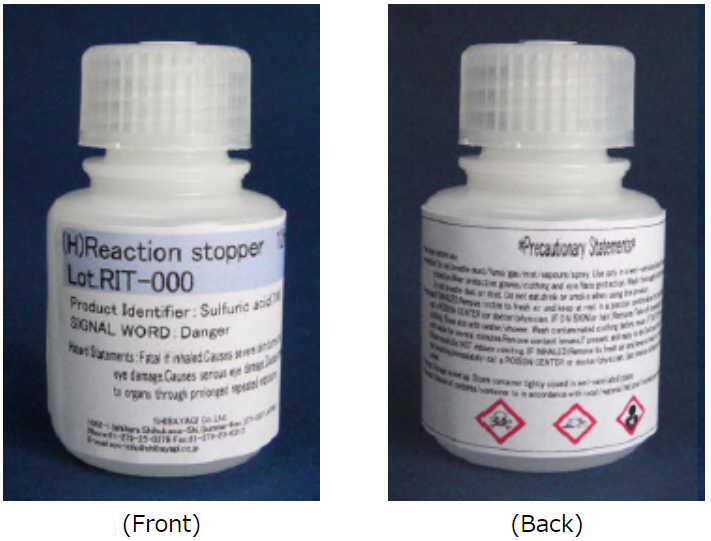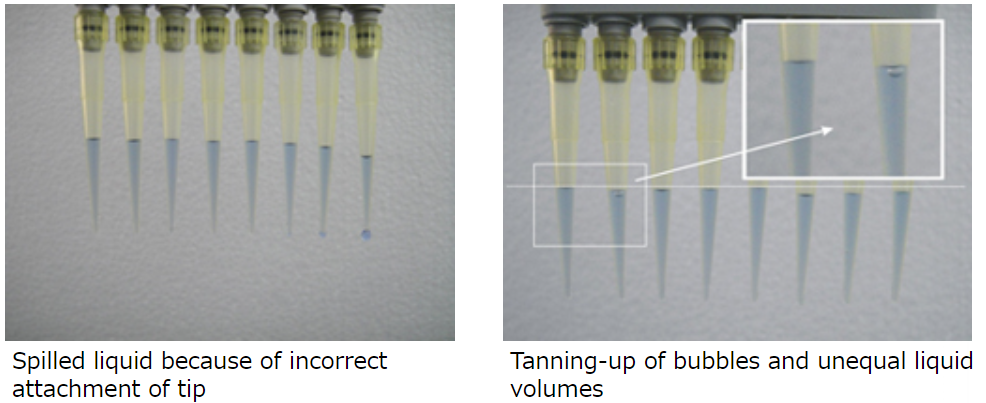Manual Operation for Shibayagi's ELISA kits
Features and Caution in ELISA
Pros
Samples can be assayed with inexpensive instruments.
Cons
Proficiency of operator would influence on assay results. For high-sensitivity assay, proficient assay technique will be needed since the assay will be easily affected by any change in handling or in assay environment. When you have a plan for high-sensitivity assay, please consider any possibility of semi-automatic assay or outsourcing of assay.
Cautions
- Our kits are not always same in assay protocols for standards, well-dispensing, reagents-dispensing, washing, and color former. Different ELISA kits from other companies have different protocols from ours.
- Handling reagents
Shibayagi's ELISA kits contain reaction stopper (diluted sulphuric acid: 1M H2SO4)in them. Please read caution on the bottle label, and follow it. Also please read the instruction carefully about other reagents.

- How to dispose reagent solutions and well-plate after assay
Please dispose reagent solutions after assay according to the rules enacted by the country, state, city of your institution. - Pipetting
- Please read instruction paper attached to your pipette and follow it strictly, and select an optimum volume pipette as recommended by the pipette maker.
- You can find information in catalogue provided by the makers about following items.
Basic knowledge on dispensing, technique of dispensing, calibration, and hints in pipetting. - Please select your tip which is provided by your pipette maker, and use tip with minor protein adsorption.
- Before your assay, please confirm that the CV is within 1 % by pipetting serum 50 ml x 10 times and gathering them in a test tube and measuring its weight every time.
- Please repeat pipetting at a constant pace. Especially, serum and plasma samples have higher viscosity, and as piston-operated tip-exchangeable pipette is used for sampling, please pipette at a slow pace.
- Please do not scratch the bottom or wall of wells by getting nervous.
- We don't recommend to use multi-channel pipettes (8 or 12 channels). If you prefer to use them, please make sure that all the tips are attached to the pipette equally and tightly before use, and that all the channels can work with permissible variation.
- Some part of the liquid in the tips pipette may be spilled if the tips are not attached to it correctly.
- Maintain your multi- channel pipette regularly to avoid the systematic error.
- Hold and treat multi-channel pipette parallel with the plate. If not, the pipette may scratch the side or bottom of the wells and remove the coated antibody.

- Sample
- Collecting condition
- Please choose the appropriate way of collection from laboratory animals following the regulation of your institution.
- Sampling should be carried out to avoid various factors influencing assay system, such as hemolysis,chyle, bilirubin and fibrin.
- *These disturbances may affect your sample assay.
- Treatment of serum or plasma samples should be done quickly. (Temporary storage in ice is also recommended.)
Please make sure to check permissible anticoagulant and its concentration beforehand.*Heparin is not recommended for collecting samples for anti-ds/ss DNA ELISA KIT*Ctric acid is not recommended for collecting samples for Human Apo B-48 ELISA KIT - We recommend you to preserve serum or plasma at lower than -35 (if possible -80). Depending on assay substances, storage condition may be different. Therefore, please check it beforehand.
*Please notice that some samples are inactivated by freeze-and-thaw cycles.
- If you use collect blood under ether anesthesia, the antigen-antibody reaction might be affected by ether contamination in blood in some assay system. In such case, ether should be evaporated off before assay.
- Sometimes insulin is contained in culture medium, so please prepare a standard curve using culture medium alone, and compare with a standard curve using assay buffer to check influence of culture components.
- Organ extracts (with acid or ethanol) contain organic solvents. Evaporate any organic solvents in sample, and make the pH neutral.
Example of operation and apparatus needed






